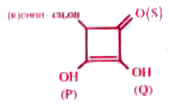The following are more basic than C6H5−NH2Solution in Telugu




The correct Answer is:B, C, D
b and c are elephatic amines where as in d.
L.P. is not in delocalization. so b,c and d are more basic than aniline
Topper's Solved these Questions
- ELECTRONIC EFFECTS AND REACTION INTERMEDIATESBook:AAKASH SERIESChapter:ELECTRONIC EFFECTS AND REACTION INTERMEDIATESExercise:LECTURE SHEET ( EXERCISE-III (LEVEL-II (ADVANCED)) (Linked Comprehension Type Questions)
Explore 6 Videos
- ELECTRONIC EFFECTS AND REACTION INTERMEDIATESBook:AAKASH SERIESChapter:ELECTRONIC EFFECTS AND REACTION INTERMEDIATESExercise:LECTURE SHEET ( EXERCISE-III (LEVEL-II (ADVANCED)) (Matrix Matching Type Questions)
Explore 2 Videos
- ELECTRONIC EFFECTS AND REACTION INTERMEDIATESBook:AAKASH SERIESChapter:ELECTRONIC EFFECTS AND REACTION INTERMEDIATESExercise:LECTURE SHEET ( EXERCISE-III (LEVEL-II (ADVANCED)) (Straight Objective Type Questions)
Explore 14 Videos
- ELECTRON MIGRATION EFFECTS Book:AAKASH SERIESChapter:ELECTRON MIGRATION EFFECTS Exercise:QUESTIONS FOR DESCRIPTIVE ANSWERS
Explore 10 Videos
- ELEMENTS OF BORON FAMILYBook:AAKASH SERIESChapter:ELEMENTS OF BORON FAMILYExercise:OBJECTIVE EXERCISE - 3
Explore 7 Videos
Similar Questions
Mesomerism is extended resonance. Atoms or groups with lone pairs of electrons release electrons when connected to doubly bonded carbons. It is +M effect. Unsaturated groups when connected to doubly bonded carbons withdraw π electrons from the doubly bonded carbons. It is -M effect. Here the double bond is the unsaturated group should be between less electronegative atom and more electronegative atom.

Mesomeric effect stabilizes or destabilizes the conjugate base of an acid. As a result the acid may be strong or weak has 4(OH) groups. Which -OH is a strong acid?
has 4(OH) groups. Which -OH is a strong acid?
View SolutionMatch the following columns

View SolutionCorrect gradation of basic character
View SolutionHyperconjugation effect is also termed as 'no bond resonance'. Why?
View SolutionWhich one of the following compounds is not a protonic acid ?
View SolutionArrange the following in decreasing order of their basic strength :
C6H5NH2,C2H5NH2,(C2H5)2NH3
View SolutionArrange the following in increasing order of their basic strength:
(i) C2H5NH2,C6H5NH2,NH3,C6H5CH2NH2and(C2H5)2NH
(ii) C2H5NH2,(C2H5)2NH,(C2H5)3N,C6H5NH2
(iii) CH3NH2,(CH3)2NH,(CH3)3N,C6H5CH2NH2.
View SolutionArrange the following: (i) In decreasing order of the pK_(b) values: C_(2)H_(5)NH_(2),C_(6)H_(5)NHCH_(3),(C_(2)H_(5))_(2)NHandC_(6)H_(5)NH_(2) (ii) In increasing order of basic strength: C_(6)H_(5)NH_(2),C_(6)H_(5)N(CH_(3))_(2),(C_(2)H_(5))_(2)NH andCH_(3)NH_(2) (iii) In increasing order of basic strength: (a) Aniline, p-nitroaniline and p-toluidine (b) C_(6)H_(5)NH_(2),C_(6)H_(5)NHCH_(3),C_(6)H_(5)CH_(2)NH_(2) (iv) In decreasing order of basic strength in gas phase: C_(2)H_(5)NH_(2),(C_(2)H_(5))_(2)NH,(C_(2)H_(5))_(3)NandNH_(3) (v) In increasing order of boiling point: C_(2)H_(5)OH,(CH_(3))_(2)NH,C_(2)H_(5)NH_(2) (vi) In increasing order of solubility in water: C_(6)H_(5)NH_(2),(C_(2)H_(5))_(2)NH,C_(2)H_(5)NH_(2^.)
View Solutionनिम्नलिखित को क्षारकीय प्राबल्य के घटते क्रम में लिखिए-
C6H5NH2,C2H5NH2,(C2H5)2NH,NH3
View Solutionनिम्नलिखित को क्रम में लिखिए-
(i) pKb मान के घटते क्रम में -
C2H5NH2,C6H5NHCH3,(C2H5)2NH एवं C6H5NH2
(ii) क्षारकीय प्राबल्य के घटते क्रम में-
C6H5NH2,C6H5(CH3)2,(C2H5)2NH एवं C6H5NH2
(iii) क्षारकीय प्राबल्य के बढ़ते क्रम में- (क) ऐनिलीन , पैरा – नाइट्रोऐनिलीन ,एवं पैरा-टॉलूईन
(ख) C6H5NH2,C6H5NHCH3,C6H5CH2NH2
(iv) गैस अवस्था में घटते हुए क्षारकीय प्राबल्य के क्रम में-
C6H5NH2,(C2H5)2NH,(C2H5)3N एवं NH3
(v) क्वथनांक के बढ़ते क्रम में-
C6H5ON,(CH3)2NH,C2H5NH2
(vi) जल में विलेयता के बढ़ते क्रम में-
C6H5OH,(CH3)2NH,C2H5NH2
View SolutionArrange the following in decreasing order of their basic strength: C6H5NH2,C2H5NH2,(C2H5)2NH,NH3 in aqueous solution.
View SolutionNH3,C6H5NH2 से अधिक क्षारीय है, क्यों ?
View Solutionनिम्नीकरण को क्षारकीय प्राबल्य ( प्रबलता ) के घटते क्रम में लिखिए -
C6H5NH2,C2H5NH2,(C2H5)2NH,NH3.
View Solutionनिम्नलिखित को क्रम में लिखिए -
(i) pKb मान के घटते क्रम में -
C2H5NH2,C6H5NHCH3,(C2H5)2NHएवं C6H5NH2
(ii) क्षारकीय प्राबल्य के घटते क्रम में -
C6H5NH2,C6H5N(CH3)2,(C2H5)2NH एवं CH3NH2
(iii) क्षारकीय प्राबल्य के बढ़ते क्रम में -
(a) ऐनिलीन , पैरा - नाइट्रोऐनिलीन एवं पैरा-टोलूडीन
(b) C6H5NH2,C6H5NHCH3,C6H5CH2NH2
(iv) गैस अवस्था में घटते हुए क्षारकीय प्राबल्य के क्रम में -
C2H5OH,(C2H5)2NH,(C2H5)3N एवं NH3
(v) क्वथनांक के बढ़ते क्रम में -
C2H5OH,(CH3)2NH,C2H5NH2
(vi) जल में विलेयता के बढ़ते क्रम में -
C6H5NH2,(C2H5)2NH,C2H5NH2.
View SolutionArrange the following in decreasing order of their basic strength :
C6H5NH2,C2H5NH2,(C2H5)2NH,NH3
View SolutionArrange the following in increasing order of their basic strength.
C2H5NH2,C6H5NH2,NH3,C6H5CH2NH2and(C2H5)2NH
View Solution

